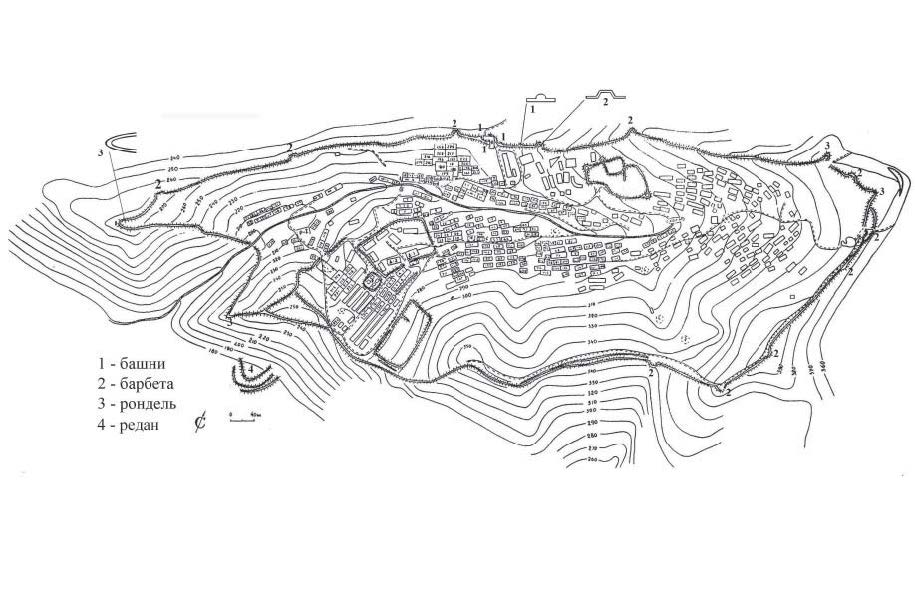THE SPECIFIC FEATURES OF FORTIFICATIONS AT THE JURCHEN WALLED TOWNS XIII C.
Keywords:
Far East, archaeology, the Jurchens, the East Xia State, the Jin Dynasty, fortifi cation, rampart, graff, towers, gates, rondels, barbette, medieval sitesAbstract
During the Mongol conquest of the Jin Dinasty the Jurchen people (the Manchus’ ancestors) established a new state named Dongxia (the Eastern Xia). The most part of it was located on the territory of modern Primorsky Krai. While preparing for the national defense, the Jurchens contrived a new type of walled towns. They began to build heavily fortifi ed fortress towns that could protect them from the potential aggressors. Each town performed its own functions that determined its location, size and inner topography. Having used the vast experience of predecessors, the Jurchens formed their own trend of town-building that was based on the
rational using of the natural and geographical conditions. The Jurchen people constructed those fortress towns on the mountain knaps in order to keep the adjacent lowlands under control and provide themselves with the most defensible location. The narrow valley situated between the knaps gave the defenders an opportunity to observe the enemy’s movements staying invisible for it and move from a defensive posture to an off ensive tactics. Each of those walled towns was naturally three-side protected with the steep mountainous slopes. While choosing the town location, the Jurchens always took into account a number of military topographic factors. For instance, one of the most essential conditions was the accessibility of such important communicational elements as a river and fl atlands. The outer town walls were raised factoring in the steepness of mountainous slopes. That technique could avoid the need of digging the ditches around the town. The town gates were defended with the additional barbicans situated over the gates. The town was surrounded with the rampant (usually the earthen one) that was supplied with such fortifi ed constructions as towers, rondels and barbettes. Those facilities had a range of specifi c features typical for the town of thirteenth century and were used defensive purposes. Development of the Jurchens’ artillery equipment incited exploration of the advanced fortifi ed technologies
References
Артемьева Н.Г. Корейские традиции в фортификации чжурчжэньских крепостей // Ойкумена. Регионоведческие исследования. 2009. № 1(8). С. 56−62.
Артемьева Н.Г. Археологические исследования фортификационных сооружений Шайгинского городища // Вестник ДВО РАН. 2009а. № 5. С. 84−89.
Артемьева Н.Г. Чжурчжэньские валы // Средневековые древности Приморья. Вып. 1. / Отв. ред. Н. Г. Артемьева. Владивосток: Дальнаука, 2012. С. 13−36.
Воробьёв М.В. Городище чжурчжэней как фортификационные сооружения // Докл. Географ. об-ва СССР. Л.: Изд–во ГО СССР. 1968. Вып. 5. С. 60−73.
Макиевский С.В. О функциональном назначении редутов и реданов на чжурчжэньских памятниках Приморья // Средневековые древности Приморья. Вып. 1. / Отв. ред. Н. Г. Артемьева. Владивосток: Дальнаука, 2012. С. 164−171.
Шавкунов Э.В. Культура чжурчжэней-удиге XII–XIII вв. и проблема происхождения тунгусских народов Дальнего Востока. М.: Наука, 1990. 284 с.
Школяр С.А. Китайская доогнестрельная артиллерия. (Материалы и исследования). М.: Наука, 1980. 406 с.

Downloads
Published
How to Cite
Issue
Section
License
Copyright (c) 2018 N. G. Artem'eva

This work is licensed under a Creative Commons Attribution-NonCommercial 4.0 International License.







